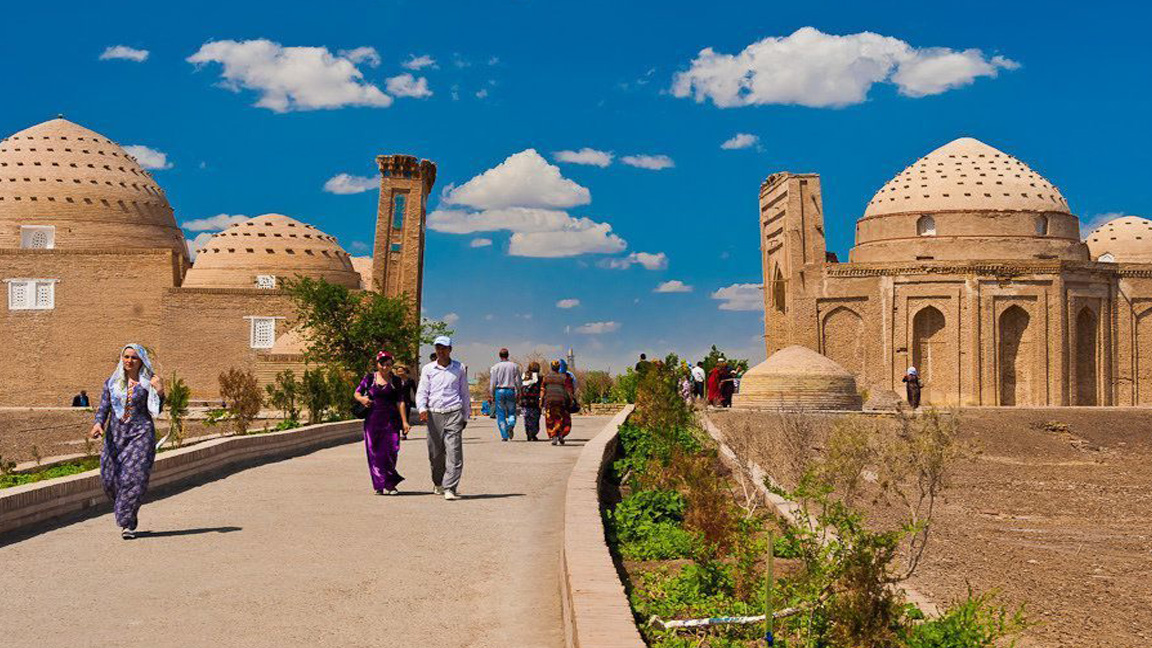


Konye-Urgench is a municipality of about 30,000 inhabitants in north-eastern Turkmenistan, just south from its border with Uzbekistan. It is the site of the ancient town of Ürgenç (Urgench), which contains the unexcavated ruins of the 12th-century capital of Khwarezm. Since 2005, the ruins of Old Urgench have been protected by UNESCO as a World Heritage Site.
Formerly situated on the Amu-Darya River, Old Ürgenç was one of the greatest cities on the Silk Road. Its foundation date is uncertain, but the extant ruins of the Kyrkmolla fortress have been dated (rather ambitiously) to the Achaemenid period. The 12th and early 13th centuries were the golden age of Ürgenç, it became the capital of Khorezm Empire and it surpassed in population and famed all other Central Asian cities barring Bukhara. In 1221, Genghis Khan razed it to the ground in one of the bloodiest massacres in human history.
The city was revived after Genghis’s assault, but the sudden change of Amu-Darya’s course to the north and the town’s destruction again in the 1370s, this time by Timur, forced the inhabitants to leave the site forever.
The area was later inhabited by Turkmen in 1831, but they built outside the old town, using it as a graveyard.
A new town of Urgench was developed to the Southeast, in present-day Uzbekistan. First archeological research on the old city site was conducted by Alexander Yakubovsky in 1929.
Most of Ürgenç’s monuments have completely or partly collapsed. Nowadays, the site contains three small mausoleums of the 12th century and the more elaborate 14th-century Törebeg Hanym Mausoleum, which was much restored in the 1990s.
The most striking extant landmark of Old Urgench is the early 11th-century Gutluk-Temir Minaret, which, at 60 meters, used to be the tallest brick minaret prior to the construction of the Minaret of Jam – which was later surpassed by the Qutb Minar when it was completed in 1368. Also of note is the Il-Arslan Mausoleum – the oldest standing monument: a conical dome of 12 facets, housing the tomb of Mohammed II’s grandfather, Il-Arslan, who died in 1172. Somewhat to the north, sprawls a vast medieval necropolis.